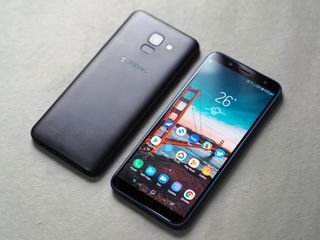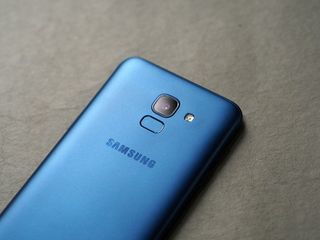Samsung is losing ground in China and India, and it has itself to blame

With smartphone sales plateauing in Western countries, phone manufacturers shifted focus to Asian markets, where the addressable userbase is considerably larger. Samsung, in particular, has managed to carve out a healthy lead for itself in both China and India over the last five years thanks to aggressive marketing and an extensive offline distribution network.
However, it lost the top spot in India to Xiaomi at the end of 2017 and is similarly facing increased competition in China. Samsung isn't the only company to face the heat in Asian markets; Apple announced earlier this month that it was slashing its revenue outlook by several billion dollars on the back of slow sales in China. That's not surprising given the fact that the iPhone XS Max doesn't really differ all that much from its predecessor, and it falls behind when compared to its Android rivals.
What hurts Apple also hurts Samsung

While Apple has a healthy presence in China, its story in India is a dire one. Android utterly dominates the market share in the country, with Apple devices accounting for less than 1%. And as Apple doesn't manufacture the latest iPhones locally, the government imposes heavy duties on its products, with the base variant of the iPhone XS Max retailing for $1,570 (₹109,900). Even the iPhone XR —touted to be the budget option this year — starts off at $1,100 (₹76,900). To put things into context, Huawei's flagship Mate 20 Pro with its three rear cameras is available in the country for $1,000 (₹69.900).
Samsung supplies several components for Apple, and low demand for iPhones is hurting both companies.
With the Indian mobile industry driven primarily by price, there is no way for Apple to claw its way back in the country without drastically changing its business practices. Samsung, meanwhile, is also facing a sales downturn and is projected to miss its profit targets for Q4 2018. That's a big deal when you consider the fact that Samsung posted record profits for much of last year.
Even though Samsung as a whole posted healthy profits, a bulk of that was down to its chip business, which has taken off in recent years. Samsung became the world's largest semiconductor early last year after overtaking Intel, and that momentum has continued through much of 2018. However, Apple is one of Samsung's biggest clients for DRAM modules, and with iPhone sales on the downturn, Samsung is also slashing its outlook. With the company no longer able to rely as heavily on its chip division, it needs to look elsewhere for growth, and that means increased scrutiny over its phone business.
Samsung's budget strategy just isn't working

Samsung's phone sales have been on the decline for some time now, with the latest numbers from Strategy Analytics showing a YoY decline of 13%. At the same time, Huawei has posted a massive 32% increase in sales figures, and Xiaomi is similarly posting a healthy 19.1% uptick.
A large part of Samsung's lackluster sales is because of its performance in the budget and mid-range segments. Having staved off the threat of local manufacturers like Micromax, Intex, and Lava several years ago, Samsung was optimally placed to deal with the influx of Chinese brands that made their foray into India. But its inability to recognize the changing dynamics meant the likes of Xiaomi, Honor, OPPO, and Vivo were able to take advantage of the huge demand for budget phones.
Be an expert in 5 minutes
Get the latest news from Android Central, your trusted companion in the world of Android
Samsung failed to counter the threat of Chinese brands and paid a heavy price.
Devices under $200 account for a sizable portion of sales in India and Xiaomi utterly dominates in this category, with the brand selling over ten phones in the budget space. It's no wonder, then, that four out of five best-selling phones in India come from Xiaomi. To give you an idea of the numbers involved, the entry-level Redmi 5A — which retails for under $100 — was the best-selling Android phone globally.
Meanwhile, Samsung continued to ply lackluster Galaxy J devices in the budget segment, with most of these devices featuring outdated hardware and little to no software support. The strategy worked for Samsung in the past as it was the only brand catering to tier two cities and towns, but with OPPO and Vivo building out their offline distribution networks, Samsung lost its edge.
Of the countless Galaxy J devices Samsung rolled out over the last three years, I can think of only one that stood out: last year's Galaxy J7 Pro. It was the first $300 device to feature Samsung Pay, and the mobile payments service combined with decent hardware meant it had a chance against the likes of Xiaomi and Honor. But instead of building on that momentum, Samsung took a step back with its Galaxy J and even Galaxy A offerings in 2018.
Samsung can make a good budget phone, but it doesn't do it often enough.
The 2018 Galaxy J launches — in the form of the Galaxy J8, J6, J6+, and the J4 — were all derivative and had mediocre hardware that wasn't even close to what Chinese brands were offering. To call them a dumpster fire would be an affront to dumpsters. In a year where everyone else raised the bar for value, Samsung decided to stick with its usual strategy of rolling out phones with parts from the leftover bin, and unless that changes this year, Samsung will lose even more ground.
Even HMD learned early on that it needs to be aggressive to succeed in India. The 2017 Nokia 6 had underwhelming hardware for its asking price, and HMD remedied the situation with the Nokia 6.1, and followed it up with strong launches in the form of the Nokia 7 Plus, Nokia 6.1 Plus, and the Nokia 8.1.
During the same time, Samsung ceded a lot of ground in the $500 segment to OnePlus, which is now the largest premium phone maker in India. It wasn't because Galaxy A devices were bad — if anything, Samsung did a much better job this year with the Galaxy A8+, the more recent Galaxy A7, and the quad camera Galaxy A9. However, Samsung priced them too high and diluted the Galaxy A brand by releasing several budget-focused models like the Galaxy A6+ — a $270 device powered by the Snapdragon 450 — in a market where the Snapdragon 845-powered POCO F1 is available for just $20 more.
In the Galaxy J7 Pro, Samsung has shown that it knows how to build a decent budget phone. All it needs to do now is build more devices in a similar vein. The Galaxy A7 and A9 are a step in the right direction in the mid-range category, and Samsung now needs more robust budget devices to stand a chance in India.
No pressure then.

Harish Jonnalagadda is a Senior Editor overseeing Asia at Android Central. He leads the site's coverage of Chinese phone brands, contributing to reviews, features, and buying guides. He also writes about storage servers, audio products, and the semiconductor industry. Contact him on Twitter at @chunkynerd.
